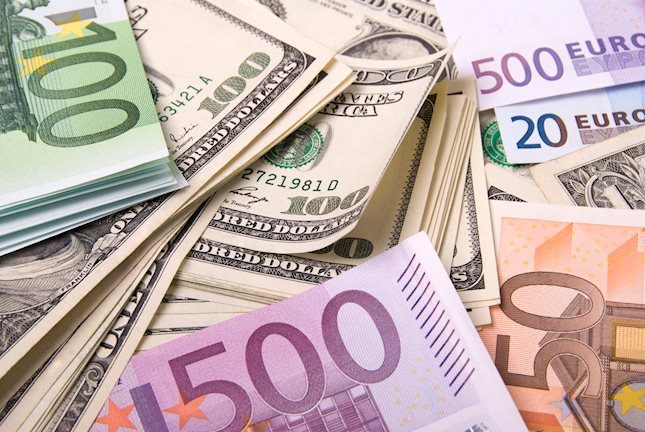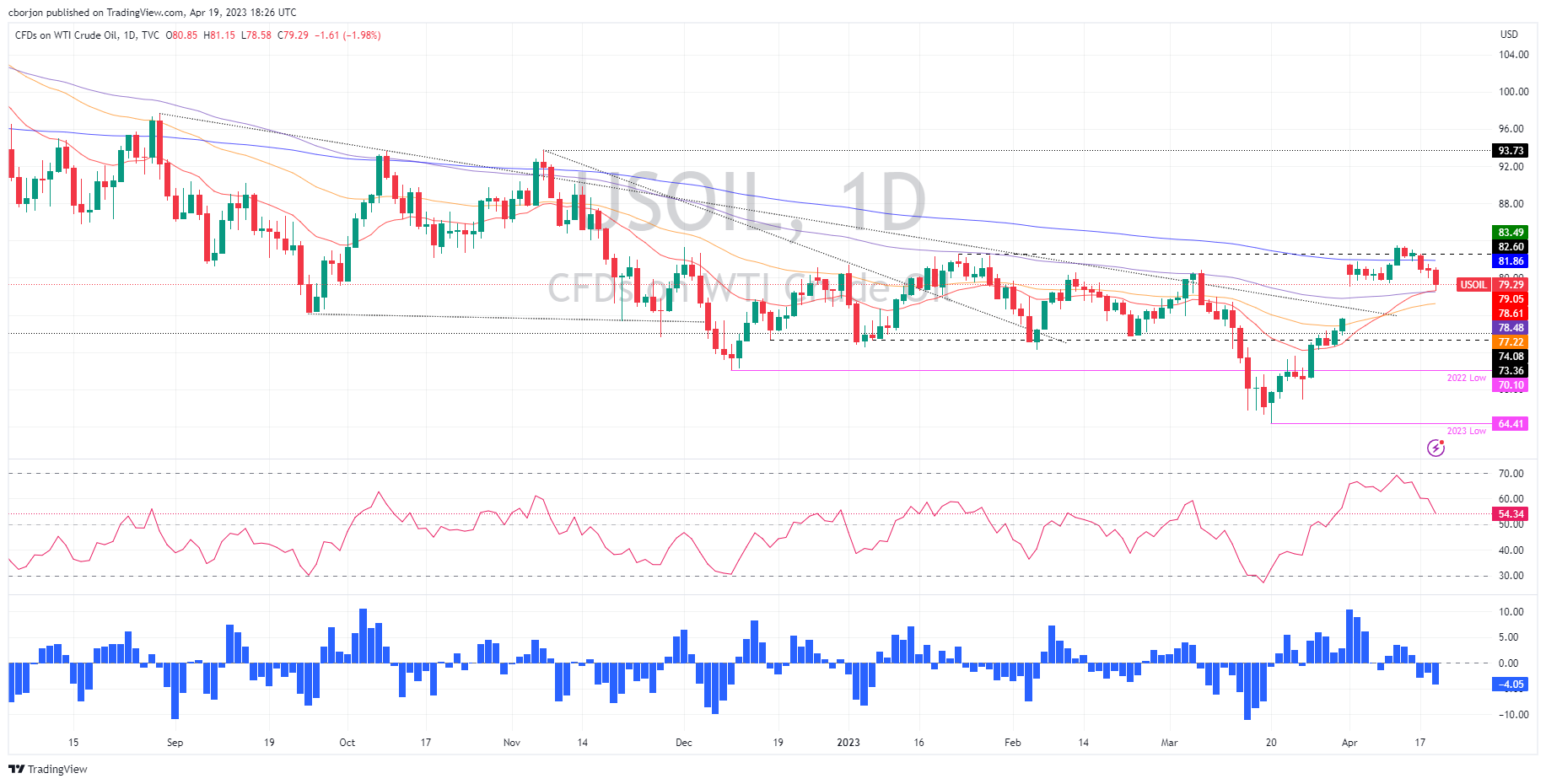- WTI is falling as the American Dollar remains bolstered by expectations for a Fed hike.
- US EIA’s 600k barrel increase had no impact on WTI price.
- WTI Price Analysis: Downside risks remain below $80.00; otherwise, oil prices will stay sideways.
Western Texas Intermediate (WTI), the US crude oil benchmark, falls as the US Dollar (USD) strengthens due to speculations that the Fed will raise rates as it tries to tackle sticky inflation. Therefore, WTI is trading at $79.65 PB, down more than 1.50%.
The greenback continued to trade higher during the New York session. Federal Reserve hawkish commentary on Tuesday spurred a jump in US Treasury bond yields, which underpinned the US Dollar. Market participants getting ready for a 25 bps rate hike by the Fed pushed the American Dollar (USD) higher, as shown by the US Dollar Index gaining 0.22%, at 101.942.
The CME FedWatch Tool shows odds for a lift toward the 5.00%-5.25% threshold at an 85.4% chance for the Fed’s May meeting.
Consequently, the US 2-year Treasury bond yield, the most sensitive to short-term interest rate adjustments, is up six and a half bps at 4.267%, increasing demand for the US Dollar, thus making dollar-denominated commodities more expensive for foreign buyers.
Another reason for oil’s fall was the latest US Energy Information Administration report. The data revealed an inventory draw of 4.6 million barrels for April 14, a modest increase of 600,000 barrels compared to the last week’s 3.7 million builds.
Aside from this, China, the world’s biggest crude oil importer, reported uneven economic data, indicating a challenging economic recovery after the country dropped its COVID-19 policy.
WTI Technical Analysis
WTI remains neutral to downward biased after trimming some of its gains generated by OPEC’s announcement of cutting its crude oil output by 1 million barrels around the beginning of April. Furthermore, WTI fell below the 200-day Exponential Moving Average (EMA) at $81.86, exacerbating a fall below the $80.00 PB barrier. For a bearish continuation, WTI must crack the $79.00 figure. Once done, the next demand area would be the confluence of the 20 and 100-day, around $78.48/62, followed by the $78.00 barrier. Conversely, WTI’s could continue to trade sideways if bulls reclaim $80.00.
Information on these pages contains forward-looking statements that involve risks and uncertainties. Markets and instruments profiled on this page are for informational purposes only and should not in any way come across as a recommendation to buy or sell in these assets. You should do your own thorough research before making any investment decisions. FXStreet does not in any way guarantee that this information is free from mistakes, errors, or material misstatements. It also does not guarantee that this information is of a timely nature. Investing in Open Markets involves a great deal of risk, including the loss of all or a portion of your investment, as well as emotional distress. All risks, losses and costs associated with investing, including total loss of principal, are your responsibility. The views and opinions expressed in this article are those of the authors and do not necessarily reflect the official policy or position of FXStreet nor its advertisers. The author will not be held responsible for information that is found at the end of links posted on this page.
If not otherwise explicitly mentioned in the body of the article, at the time of writing, the author has no position in any stock mentioned in this article and no business relationship with any company mentioned. The author has not received compensation for writing this article, other than from FXStreet.
FXStreet and the author do not provide personalized recommendations. The author makes no representations as to the accuracy, completeness, or suitability of this information. FXStreet and the author will not be liable for any errors, omissions or any losses, injuries or damages arising from this information and its display or use. Errors and omissions excepted.
The author and FXStreet are not registered investment advisors and nothing in this article is intended to be investment advice.
Recommended content
Editors’ Picks

EUR/USD clings to daily gains near 1.0300 after US PMI data
EUR/USD trades in positive territory at around 1.0300 on Friday. The pair breathes a sigh of relief as the US Dollar rally stalls, even as markets stay cautious amid geopolitical risks and Trump's tariff plans. US ISM PMI improved to 49.3 in December, beating expectations.

GBP/USD holds around 1.2400 as the mood improves
GBP/USD preserves its recovery momentum and trades around 1.2400 in the American session on Friday. A broad pullback in the US Dollar allows the pair to find some respite after losing over 1% on Thursday. A better mood limits US Dollar gains.

Gold retreats below $2,650 in quiet end to the week
Gold shed some ground on Friday after rising more than 1% on Thursday. The benchmark 10-year US Treasury bond yield trimmed pre-opening losses and stands at around 4.57%, undermining demand for the bright metal. Market players await next week's first-tier data.

Stellar bulls aim for double-digit rally ahead
Stellar extends its gains, trading above $0.45 on Friday after rallying more than 32% this week. On-chain data indicates further rally as XLM’s Open Interest and Total Value Locked rise. Additionally, the technical outlook suggests a rally continuation projection of further 40% gains.

Week ahead – US NFP to test the markets, Eurozone CPI data also in focus
King Dollar flexes its muscles ahead of Friday’s NFP. Eurozone flash CPI numbers awaited as euro bleeds. Canada’s jobs data to impact bets of a January BoC cut. Australia’s CPI and Japan’s wages also on tap.

Best Forex Brokers with Low Spreads
VERIFIED Low spreads are crucial for reducing trading costs. Explore top Forex brokers offering competitive spreads and high leverage. Compare options for EUR/USD, GBP/USD, USD/JPY, and Gold.
